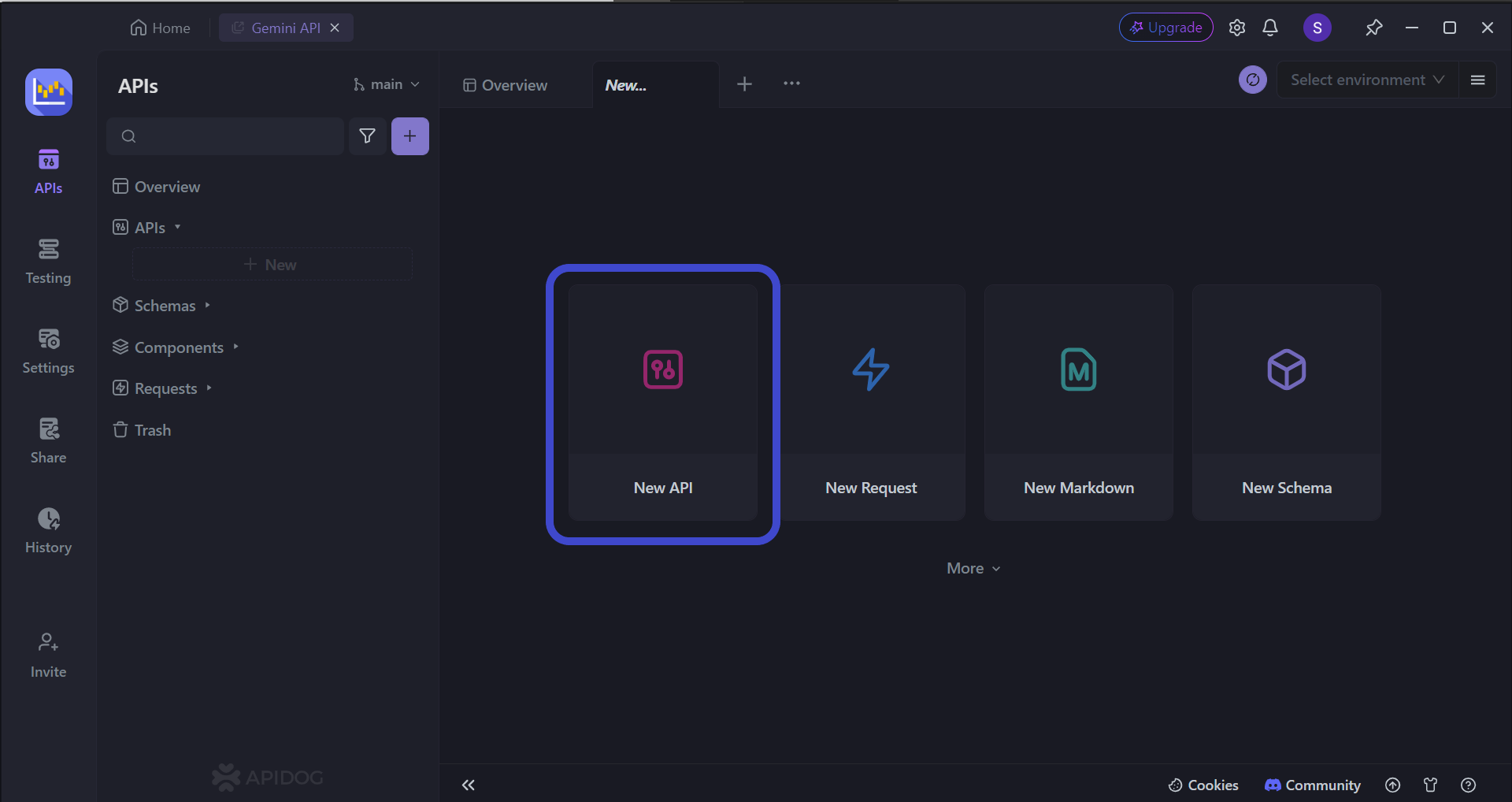Launching a buggy application can be disastrous, leading to frustrated users and potential financial losses. To safeguard against such issues, developers can leverage a powerful technique: mocking API responses.
To ensure that your API is going the right track, you can rely on an API tool like Apidog. Together with Apidog, users can not only mock APIs, but they can also build, test, and document APIs.
If you want to enjoy this powerful API tool for free now, download Apidog now by clicking the button below!

Mocking API responses involves creating simulated data that mimics real-world API interactions, enabling a safe and controlled testing environment. By mocking responses, developers can proactively identify and fix errors early in the development process, preventing them from reaching production and impacting users.
What is Mocking an API Response?
In software development, APIs (Application Programming Interfaces) are intermediaries, permitting different parts of an application or systems to communicate and exchange data. Testing these interactions are extremely important to ensure that a program can function as intended. However, testing complete APIs can take too long and become inefficient for API developers.
Creating a simulated version of the data an actual API typically returns can solve this issue - better known as mocking an API response. Therefore, API response mocks are controlled, pre-defined response that mimics the behavior of the real API.
Advantages of Mocking API Responses
1. Independent Testing:
- Freedom from External Servers: No more waiting for the real API to be available or dealing with limitations like rate limits or downtime. Mocking allows developers to test anytime, anywhere, fostering faster development cycles.
- Isolation: Mocking isolates the application under test from potential issues with the real API, ensuring test results are focused on the application itself, not external dependencies.
2. Controlled Scenarios:
- Simulating Edge Cases: Real-world APIs might not always trigger specific scenarios needed for testing. Mocking allows developers to define any desired scenario, including error conditions, invalid data, and rare edge cases, ensuring the application is prepared for unexpected situations.
- Data Tailoring: Craft specific data sets to test how the application handles different data formats, values, and combinations. This level of control allows for thorough validation of the application's logic across various data possibilities.
3. Early Bug Detection:
- Proactive Approach: By mimicking real-world interactions with controlled data, mocking helps identify potential bugs early in the development cycle. This prevents bugs from reaching production and impacting real users, saving time and resources for developers.
- Regression Prevention: Once tests are established with mocked data, they can be reused throughout the development process. This helps catch regressions, ensuring new code changes don't break existing functionalities that rely on API interactions.
4. Increased Efficiency:
- Faster Testing: Mocked responses are typically faster to retrieve than real API data, leading to quicker test execution times. This allows developers to iterate on their code more rapidly and get features out the door faster.
- Parallel Development: With mocking, front-end developers can work on the user interface without needing the back-end API to be fully functional. This enables parallel development, streamlining the overall development process.
Practical Scenarios For Mocking API Responses
1. Testing User Login:
Imagine an application that authenticates users by calling an API. Mocking allows you to create responses for:
- Successful Login: Simulate a response with a valid user token, allowing you to test how the application handles successful authentication and stores the token.
- Invalid Credentials: Mock a response with an error code indicating invalid login credentials. This lets you test if the application displays an appropriate error message to the user.
- Server Error: Create a mock response simulating a server error during login. This helps test if the application gracefully handles unexpected situations and informs the user about the issue.
2. E-commerce Product Listing:
An e-commerce application retrieves product data from an API. Mocking can be used to:
- Valid Product Data: Mock a response with a list of products with complete information (name, price, image URL). This allows testing how the application displays product listings.
- Empty Product List: Simulate a response with an empty product list. This helps test how the application handles scenarios where no products are available.
- Incomplete Product Data: Mock a response where some product information is missing (e.g., no image URL). This allows testing if the application can handle incomplete data gracefully and display a default placeholder.
3. Weather App:
A weather application relies on an API to fetch weather data. Mocking can be used to:
- Current Weather: Mock a response with current temperature, humidity, and weather conditions. This allows testing how the application displays weather information.
- Future Forecast: Simulate a response with a multi-day weather forecast. This helps test if the application can handle and display future weather data.
- API Unavailable: Mock an error response indicating the weather API is unavailable. This allows testing if the application can handle API outages and display informative messages to the user.
Apidog - Swift Mock APIs to Save Your Time!
Mocking APIs can be a life-saver, allowing many developers to allocate their time to more important aspects of their API development. Becoming a vital component of API testing, mocking API responses can rpovide insight on how the final form of the API response will look like, enabling developers to catch anything amiss.
API developers will need a reliable API tool to mock APIs. One of this API tool is Apidog. With Apidog, you can first create APIs to your liking, and later, mock them to ensure that they run flawlessly!


Build Your Personalized APIs with Apidog
With Apidog, you can personalize APIs to the smallest details. Customized APIs allows you to effortlessly create applications that you wish to have - skipping the tireless process of surfing the Internet to find an API that fits your criteria.

Begin by pressing the New API button, as shown in the image above.

Next, you can select many of the API's characteristics. On this page, you can:
- Set the HTTP method (GET, POST, PUT, or DELETE)
- Set the API URL (or API endpoint) for client-server interaction
- Include one/multiple parameters to be passed in the API URL
- Provide a description of what functionality the API aims to provide.
As building APIs also requires good understanding on APIs and endpoints, as well as path parameters, make sure to give these articles a read!


Mocking APIs with Apidog
Once you have finished building an API with Apidog, you can proceed with mocking them. There will be a section where you can obtain the mock URL for that specific API.

Here, copy the mock URL that belongs to an API you wish to mock. Once you have, you can continue by pasting the mock URL onto any browser to view its mocking JSON!

Activating Advanced Mock Settings with Apidog
With Apidog, you can provide even more settings and conditions to your API, further placing constraints that simulate certain conditions in reality.

You can set more advanced conditions through the Advanced Mock setting, as shown in the image above. This section will also request you to provide an expectation, so be ready with what your API should be able to perform and provide!
Conclusion
Mocking API responses empowers developers with a powerful tool to streamline testing and build exceptional applications. By creating simulated interactions, developers gain independence from external servers, enabling efficient testing throughout the development lifecycle. Mocking facilitates the creation of controlled scenarios, allowing for thorough testing of edge cases, error handling, and various data responses.
This proactive approach leads to early bug detection and prevention, ultimately ensuring a more robust and reliable application that delivers a positive user experience. By adopting mocking API responses, developers can prevent mistakes, save time and resources, and deliver applications with confidence.
To safeguard your APIs from any bugs or errors in their publishing stage, use Apidog to mock API responses. Preview what your API's responses are to ensure that applications and programs can process, and finally provide the functionality that everyone looks forward to!




